Set Screw Overview

The headless set screw is ideal for joining complex structures. All about the features of the grades DIN 913 and DIN 914, screws for pens with a ball, with a cylindrical end and others, materials of manufacture and all the characteristics according to GOST, read in this article.
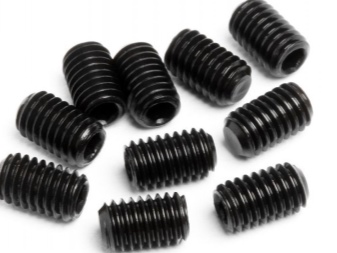

Peculiarities
Externally, the set screw (UV), or, as it is also called, the locking screw, can be distinguished by the absence of a head, where the slot (a recess for a flat screwdriver or hexagon) is located directly at the end. The body of the fastener is completely made in the form of a thread and, passing through the socket in the part, abuts against it for its entire length, which increases the reliability of the adhesion. The pressure tip also comes in different shapes, can be made of different materials (for example, nylon) and is designed to increase the stability of the fixation.
The HC prevents relative movement between two objects, allowing each to function as intended.
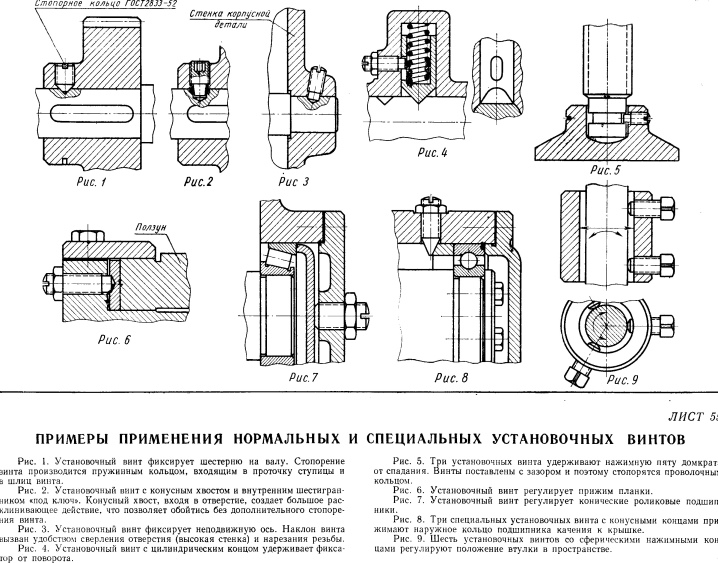
Unlike most other threaded fasteners, this is primarily a compression device commonly used to generate axial thrust. HC can be made from different grades of iron with different hardness classes, anti-corrosion alloys such as brass and stainless steel, or uncoated and coated carbon metals:
- chrome plated with zinc;
- nickel plated;
- burnished with an oxide film;
- soaked in oil;
- phosphate.
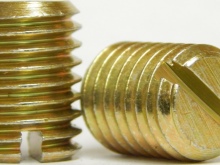
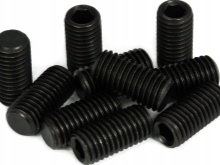
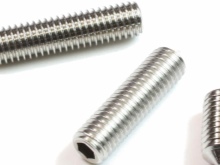
Mild steel mostly comes with a straight or cross recess, and hexes are considered to be the strongest to transmit more torque and withstand maximum loads without risk of deformation.


Types and their characteristics
Depending on the type of connection, the set screws are selected of the required length, cross-section (diameter), with a thread pitch or with a trunnion, with different fixing lugs of a suitable shape.
Fact! The widespread adoption of fastener products in the global market has led to the creation of many standards requiring manufacturers to specify dimensions, material, strength levels, etc.
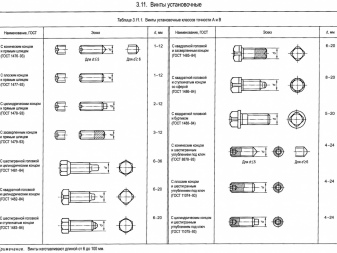

Each of them has a specific marking in accordance with the regulations. In addition to the GOST quality standard adopted in Russia, there are international analogues of ISO standards, as well as German DINs that have proven themselves all over the world.
Depending on the grade, HC are used on both soft and hard metals (or universal), can have different compression forces, vibration resistance, be used at different angles, used as adjusting, temporary or for permanent holding.
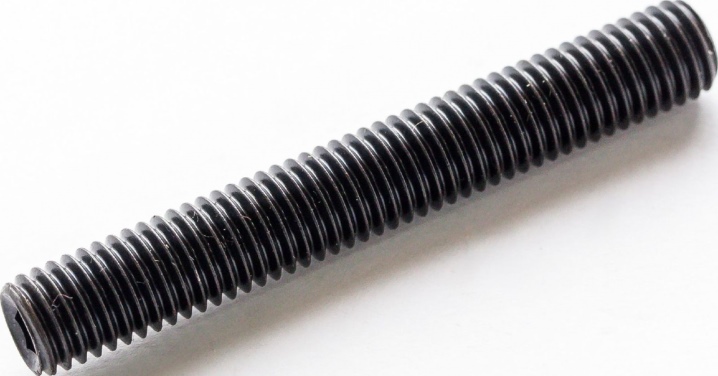
The set screws, depending on the slot available, are divided into two types.
- Internal hexagon can have three types of holding force: torsion (resistance to rotation), axial grip (resistance to lateral movement) and vibration resistance. For work, you need a special L-shaped key. This type of clamping fastener is more protected from unauthorized access and has a class of increased reliability, which is very popular and much more practical than the usual straight screwdriver, where a flat screwdriver easily slips out when the part is tightened tightly.
- Straight slot - the very first type of recess, which is still used in many devices and furniture, if there is no need to tighten the fasteners too much due to their frequent disassembly, such as, for example, in tripods for photo and video cameras. The convenience of its use is that it is easy to work with it even without a special tool, and instead of a screwdriver, an ordinary coin is suitable.
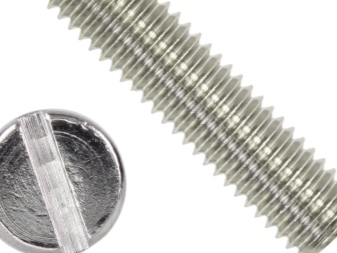
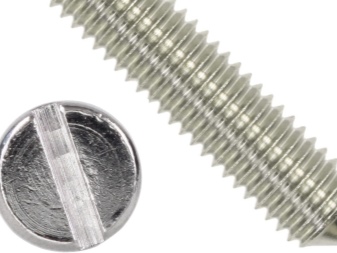
Specification and drawing of standard HC grades of various sizes, depending on their purpose, see below.
Stepped DIN 923 - this is a pressure screw of an unusual shape, consisting of 3 parts: a thin head with a straight slot and a smooth body, and on the other side a threaded trunnion (0.7–11 mm) with a blunt tip. Nominal lengths range from 3 to 25 mm with diameters from M1.4 to M10. They are made of brass, carbon and alloy steel A1 – A5, strength class - 4.8 / 5.8 (for bolts).
The tightness of the clamping is additionally ensured by the wide head, which, due to its width, does not deform the metal part. GOST is deprecated.
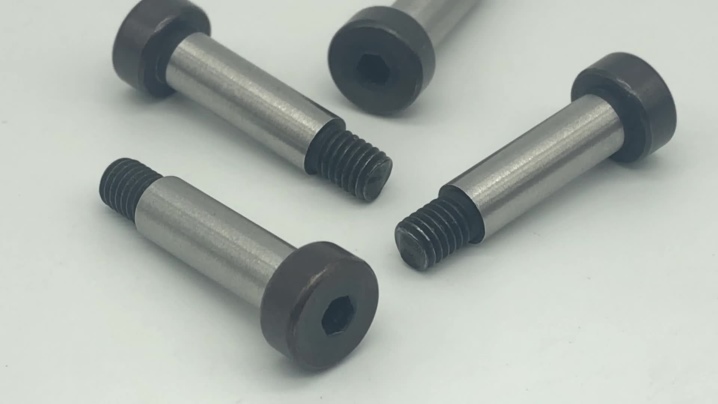
Stop UV DIN 551 with straight slot and flat end is analogous to DIN 553 for a standard screwdriver. It is very often used as a hidden fastener in various fields: from industrial instrumentation to furniture production. Pivots until it comes into contact with an internal object, thereby applying pressure and creating a clamping force. They are made of standard materials with a hardness of 14H – 22H from A1 – A5 steel, as well as brass, aluminum and even plastic. Sizes range from 5mm to 100mm length and cylinder diameter from M2 to M20. Strength class 8.8 according to GOST 1476-93.
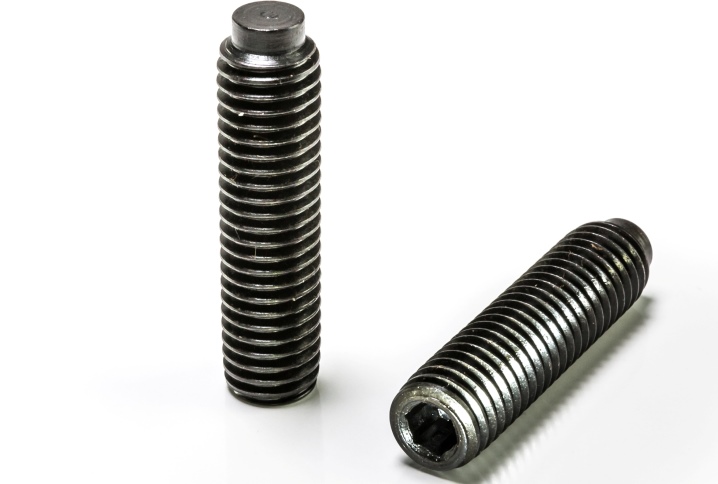
Grub screw DIN 913 is analogous to DIN 914, 915 and 916. All of them do not have a head, there is a slot for a hexagon at the end. They differ only in the type of tip, which can be blunt, tapered cylindrical or drilled. The benefits of each of them can be found below. The question of choosing this or that material is quite acute when it is planned to use fasteners in conditions of high humidity, for example, in pumping equipment. Alloy steel, titanium and special corrosion resistant coatings are widely used in pipelines. Manufacturing and metallurgical technologies are constantly evolving to allow the use of tough alloys in high wear situations such as hydrogen sulfide concentrations above 35%, temperatures up to 220 ° C, and high pressures. Hardness 45 H complies with Russian standards GOST 11074-93, GOST 8878-93, GOST 11075-93 and GOST 28964-91.
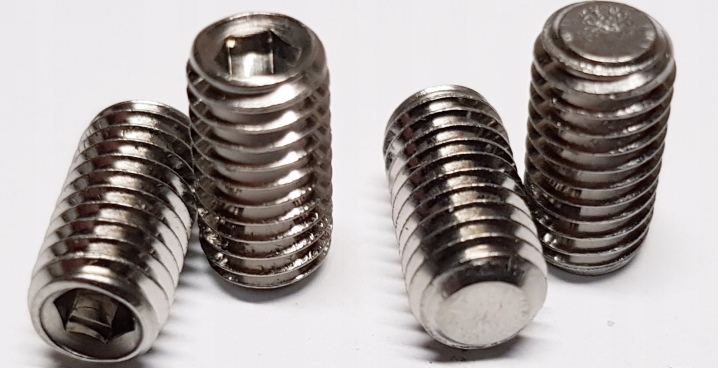
Fact! Nevertheless, it should be understood that allowable differences in dimensions can negatively affect the quality of the connections, so when choosing, you need to check if the designers have any strict recommendations for standardizing fasteners (ISO, DIN or GOST).
Replacing with an analog is sometimes critical, so sometimes you have to contact a fastener manufacturer. Depending on the size, the chamfer angle of the tip changes, for example, for long screws of the size M6x10, the chamfer angle is 90 °, and short and long or thick and long ones, such as 12x12, have a more obtuse chamfer angle of 120 °, which is slightly worse for permanent adhesion.

Appointment
Set screws are used consistently in many different industries, and one of the fairly widespread is furniture, namely door handles and lever locks. The door hardware is attached to the leaf, and then covered with a special overlay, and with the help of hidden fasteners, the structure is tightly connected from the inside so that it cannot be reached from the outside. They are mainly used where we never see them, for axial and radial fixation on shafts inside mechanisms, machine tools, automobile (and not only) motors, various structures of the furniture and construction industry. In addition to the face spline, they differ in the type of tip.
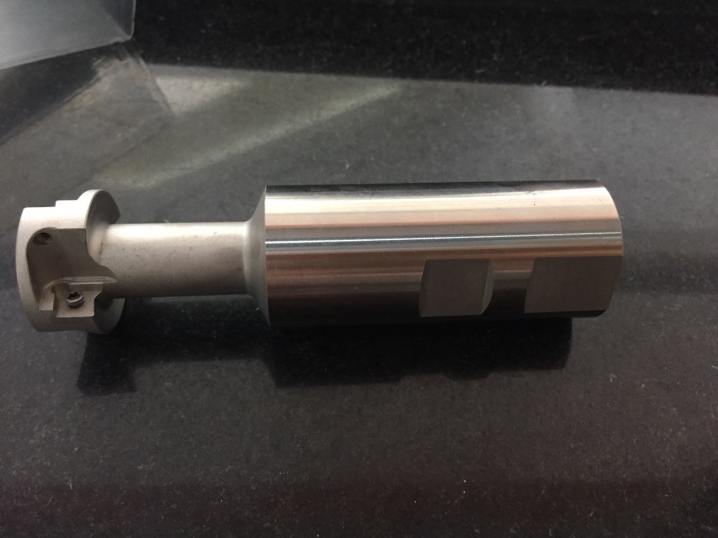
The tip of the UV is the part with which the screw is screwed into the part to be fastened. His choice is usually determined by the nature of the mechanism.
Here is information about the types and purposes of standard tips.
- Trunnion with cylindrical end - the most popular type of fasteners for temporary, permanent or semi-permanent connection of parts on shafts with a strength class from 14 to 45 H on the Brinell scale and where the edge of the cup can be cut into the shaft. Used for soft materials where strong tightening is impractical. Allows the shaft to rotate freely while keeping the spindle in a locked position.
- The tapered tip is used for permanent positioning of parts. The deep penetration of the sharp tip when tightened provides maximum axial and holding force to develop cross-point shear strength.
- The flat tip is the most affordable, simple and used in budget types of set screws. It is suitable for situations where full surface blending is required to create compression. This type of fastener is great for items that require frequent assembly and disassembly rather than permanent placement.
- UV with drilled flat tip necessary for permanent placement and secure locking of parts. The unevenness of the tip allows it to cut deeper into the metal for a durable grip. They often replace pins. Well suited for hardened steel or hollow pipes.
- Spring-loaded ball screw intended for use in soft materials such as aluminum and at extreme temperatures, including on parts that require frequent dismantling and locking of assemblies (for door handles). Some have a nylon tip that adds friction to resist loosening.

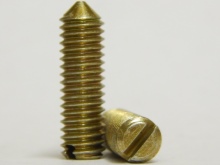
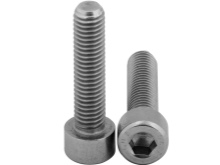
The holding force can be increased by the depth of the joints. The longer screw length reduces the number of attachment points required, where each can add as much as 15% to the total holding power. Tapered nibs with the deepest penetration will give the most magnification, while small flat nibs such as M3x4 will give the smallest magnification.
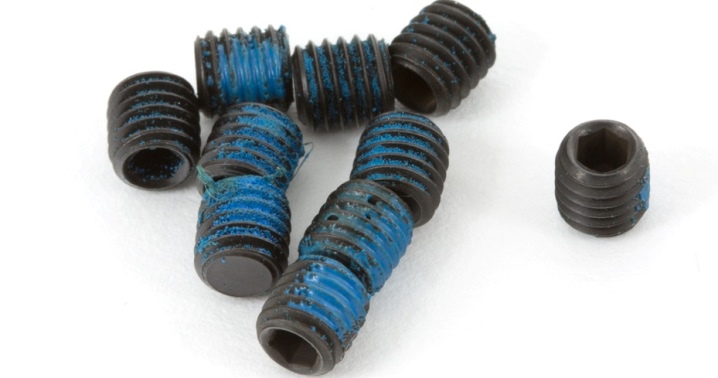
Important! A valuable property in certain electrical and electronic mechanisms is the non-magnetic properties of steel.
Besides, enterprises produce screws according to any parameters of a wholesale customer: with the required dimensions and application of anticorrosive coatings based on organic or inorganic materials (galvanized, blued, chrome plated, nickel plated, etc.). Sizing and tightening are important factors in vibration resistance and holding capacity. The screw diameter should be approximately 1/2 of the shaft (check with a specialist). UVs are available with different thread diameters (M1.2 to M 24) and shank lengths from 2 to 302 mm.
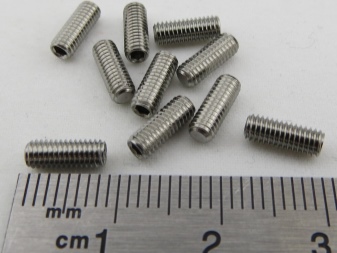
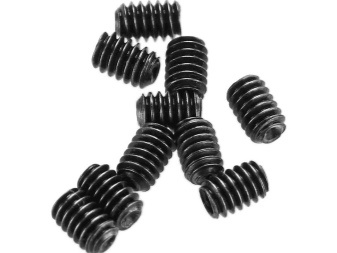
See below for set screws.













The comment was sent successfully.